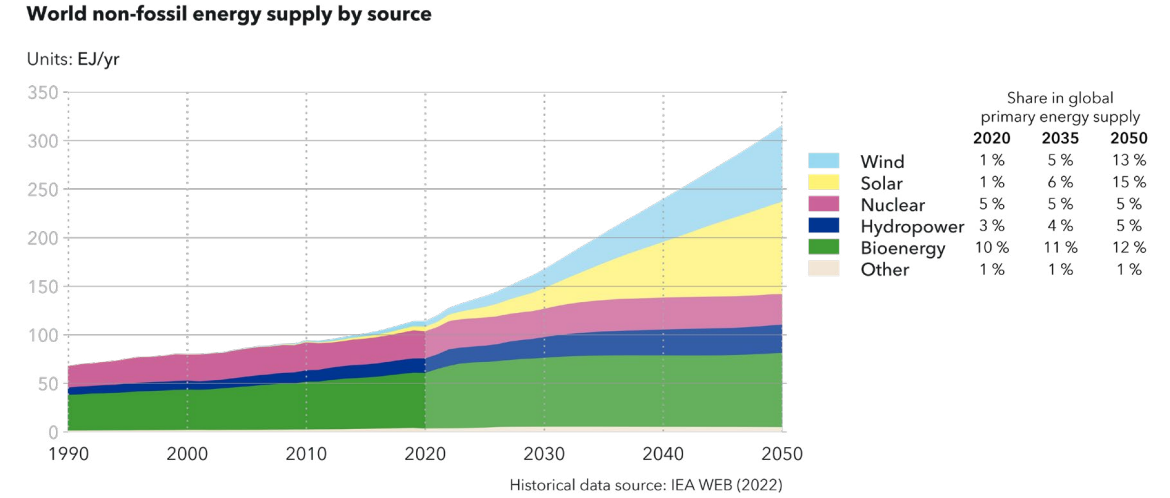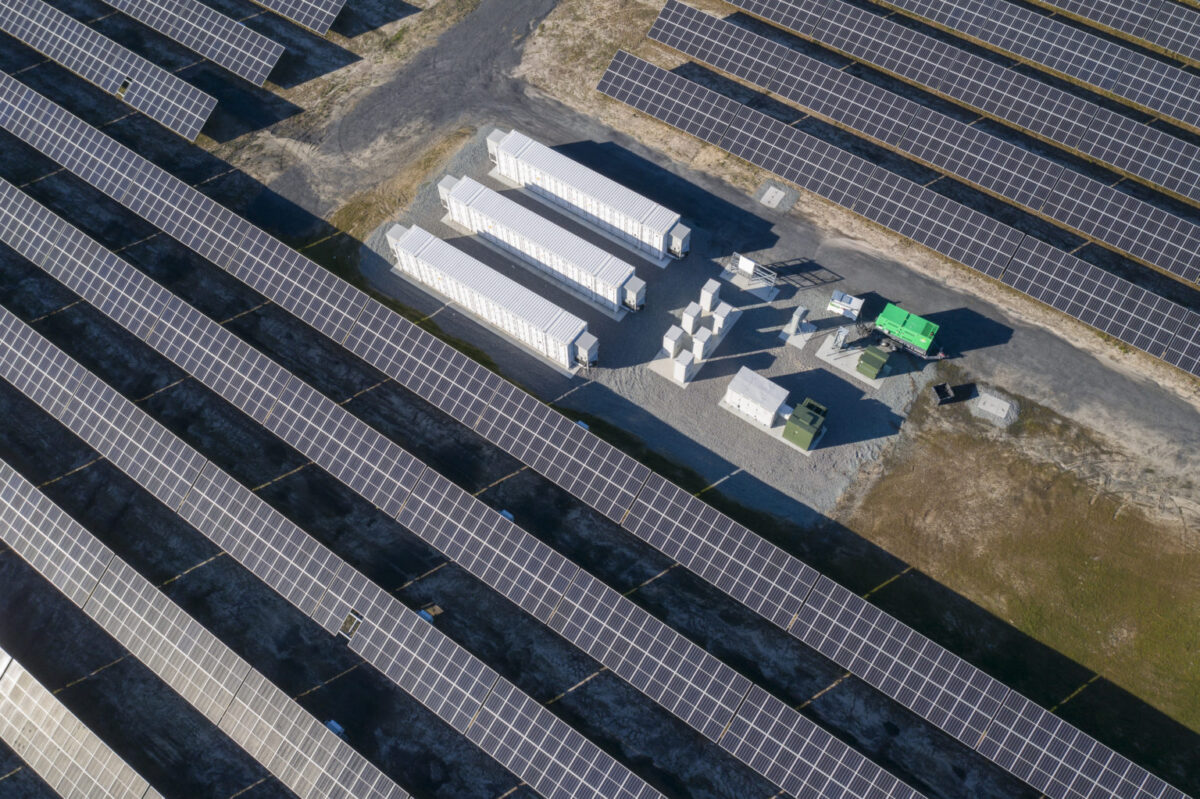From pv magazine USA
DNV, a global risk management firm, has offered its annual outlook on the global energy transition. It placed solar in the spotlight as the frontrunner in renewable energy supply.
“In 2050, solar PV will be in unassailable position as the cheapest source of new electricity globally,” said DNV.
As the world transitions toward carbon emissions-free electricity generation, DNV expects the share in the generation mix for coal to decrease 4% and gas to fall by 8% by mid-century. As the global fossil fuel industry becomes a metaphorical fossil itself, DNV expects the world energy mix to be 70% reliant on variable renewable sources like solar and wind power. Fossil fuels will represent just over 10% of the energy mix by that time.
Along this path, solar capacity increases 22-fold in DNV’s energy transition vision. The firm said it views variable renewables as the cheapest and quickest route to both decarbonization and energy security.

Costs are expected to improve by mid-decade. The global weighted average levelized cost of energy (LCOE) for solar is currently around $50/MWh for solar and $120/MWh for solar-plus-storage. DNV expects solar LCOE to drop to $30/MWh by mid-century, with some individual project costs well under $20/MWh.
“The main driver for this reduction in LCOE is the reduction of unit investments costs, which are around $900 per kW as a global average now,” said DNV. “This will fall significantly with every doubling of solar PV installation globally, reaching $650 per kW in 2050.”
Popular content
Currently, the levelized cost of solar-plus-storage is currently more than double that of standalone solar. A continuous decline in battery prices will narrow this gap to around 50% by mid-century, said DNV.
Despite its higher costs, solar-plus-storage has an advantage in capture price. Plants with storage can charge their batteries when sunlight is plentiful during the day and sell the stored electricity when the price is high. DNV said that by 2038, the capture price advantage of solar and storage co-located projects will surpass the cost disadvantage, making these projects even more attractive.
“PV and storage systems are designed as a ‘package’ that can produce energy on demand, just like hydropower, nuclear, or combustion power plants,” said DNV.
In 10 years, DNV said roughly 20% of solar projects will be built with dedicated storage, and by mid-century such projects will reach about 50%.
“By mid-century, total installed capacity will be 9.5 TW for solar PV and 5 TW for solar and storage. The resulting 14.5 TW of solar capacity is 24 times greater than in 2020,” said DNV. “While solar will have a share of 54% of installed capacity in mid-century, it will account for 30% of global on-grid electricity generation.”
DNV’s full energy transition outlook can be found here.
This content is protected by copyright and may not be reused. If you want to cooperate with us and would like to reuse some of our content, please contact: editors@pv-magazine.com.



When are you people going to realize that the Levelized Cost of X in Clean Energy is a very misleading and meaningless statistic for variable renewables. It is an Operating Expense. That is to say a LCE for Solar PV of $30/MWh is the cost when the sun is up and the solar is operating. Yet Electricity costs in regions with > 5% PV penetration are seeing their electricity costs rise. This includes Australia, EU, California, and several other jurisdictions. The cost that means something is the fully burdened cost. Including subsidies.
Conservative prediction imo.
LCOE of Utility Scale Solar PV is already between $20 and $40 per MWh in the USA. Solar PV has already reached an “unassailable position as the cheapest source of new electricity globally”. Battery Storage is set to plunge in cost this decade, with massive scaling of production and more rapid tech development.
“By mid-century, total installed capacity will be 9.5 TW for solar PV and 5 TW for solar and storage.”
So 14.5 TW if Solar PV in 2050?
We were close to 1.2 TW of globally installed Solar PV at the end of 2022. 240 GW installed in 2022. Solar PV production capacity is now over 600 GW/year. 8 June 2023 reference: “PV manufacturing capacity is projected to more than double by 2024, led by China, but oversupply is also anticipated, according to the International Energy Agency (IEA).”
They are predicting 1 TW/year production capacity by 2024, but also point out we are in over-supply already now. Costs in China are plummeting as a result. Let’s say we don’t reach 1 TW/year of production AND installation for three additional years, so by 2027. That would mean 23 TW + 1.2 TW we already have = 24 TW by 2050, midcentury. Of course, that is foolish. Solar PV is lowest cost and, like cell phones, is going in faster every day, even in poor countries. Of course production and installation will continue accelerate until saturation of the market is reached. Try 60% to 80% of electricity by 2040 (2045 at the latest), with most of that having some battery storage.
Note the graph shown shows Solar PV continuing to grow linearly. That is not how disruptive replacement growth happens. How many predictions have the EIA, and many others, made using linear growth, only to be shown they were horribly wrong later?
Solar PV and Batteries are now growing like wildfires.
Mike Shurtleff is 100% right. The prediction is as laughable as the IEA’s past ones. Solar will be 1/3rd the price it is today by 2050, not 1/2. Annual global installations will probably hit 1.5Tw by 2030 and keep booming. Coal will be wiped out much faster than predicted. Look up Ramez Naam’s great blog about how insanely conservative the IEA’s predictions for the installation and cost reductions of solar have been. Solar is now cheaper than it is supposed to be by 2080 according to their older predictions!